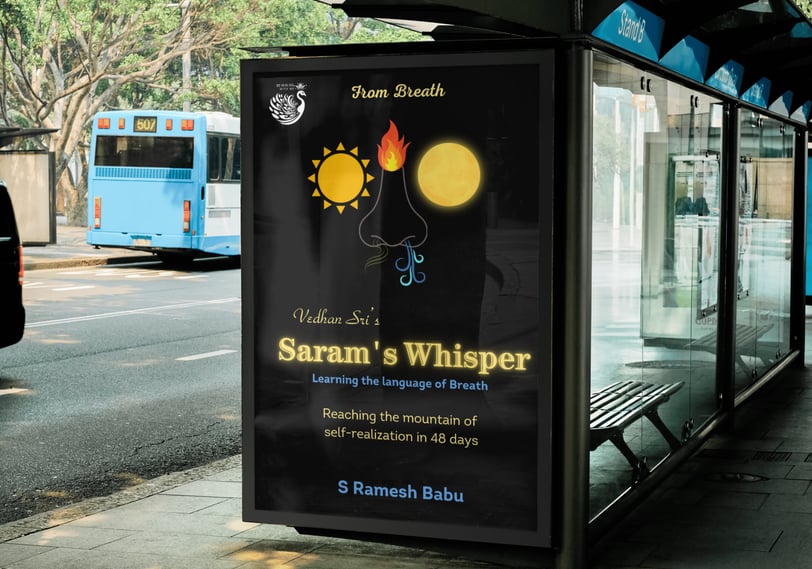The Breath Behind Yoga: How Saram (Swara Sastra) Unlocks Deeper Mastery of Mind and Body
Discover how ancient Saram (Swara Sastra) science empowers yoga practice through breath mastery. Learn which breath (Swara) enhances different yogic practices and explore modern research validating these ancient insights.
S Ramesh Babu
5/4/20252 min read


The Breath Behind Yoga
How Saram (Swara Sastra)
Unlocks Deeper Mastery of Mind and Body
1. Breath: The Foundation of All Yoga
The Hatha Yoga Pradipika (Chapter 2, Verse 3) declares:
“As long as there is breath in the body, there is life. When breath departs, so does life. Therefore, regulate the breath.”
Without conscious breath control, no deep yoga progress is possible. Pranayama (controlled breath) is called the fourth limb of Yoga in Patanjali’s Yoga Sutras.
Yet ancient masters went even deeper. Saram, the science of Swara (breath current), teaches that left, right, and both nostrils govern different forces of life.
What is Saram (Swara Sastra)?
“Saram” means uninterrupted subtle flow (of energy, air, consciousness).
In Swara Sastra, the nostril through which the breath is predominantly flowing (called Swara) at any moment determines the success or failure of our actions.
The breath alternates between nostrils roughly every 60–90 minutes. This is called the Swara cycle.
Thus, knowing which breath is active, and aligning it with your asana, meditation, or pranayama practice, can dramatically enhance your results.
Which Breath Supports Which Yoga Practices? (As per Saram)
4. How to Check and Shift Your Swara for Yoga
To check:
Close one nostril lightly and breathe in.
Repeat on the other side.
The side that feels easier and freer is your active Swara.
To shift Swara naturally:
Lie on your side (opposite to the Swara you want to activate).
E.g., lie on your right side to activate the left Swara (cooling, calming).
(Ancient tip from Saram: You can also block the armpit of the active side for faster Swara change!)
5. Modern Scientific Research Supporting Breath Control in Yoga
Modern science now validates what ancient yogis knew.
A study in International Journal of Yoga (2013) found that left nostril breathing significantly reduced blood pressure and heart rate, inducing relaxation (Parasympathetic activation).
A 2020 meta-analysis published in Frontiers in Psychology confirmed that alternate nostril breathing improves attention, stress resilience, and emotional regulation.
Right nostril breathing (Pingala) was associated with increased sympathetic activity, leading to better focus, energy, and outward-directed tasks.
(Sources:
Telles et al., International Journal of Yoga, 2013
Balbanjan et al., Frontiers in Psychology, 2020)
Journey
Explore the transformative power of breath mastery.
Wisdom
Awakening
+919944309355
© 2025. All rights reserved.
